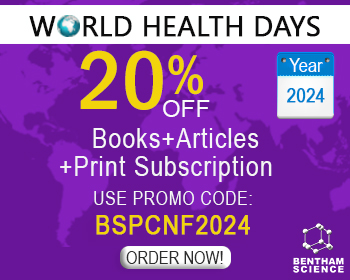Abstract
Aims: To explore more active fluoroquinolone anticancer candidates.
Background: Cancer which can affect almost any part of the body, is most striking and deadliest disease. It is estimated that around one in five people globally develop cancer during their lifetime, and approximately 10% people eventually die from this disease, and 18.1 million new cancer cases with 9.6 million deaths occurred in 2018. The anticancer agents play an intriguingly role in fighting against cancer, and above 100 drugs have already been marketed for this purpose. However, the major drawback of current accessible anticancer agents is the low specificity which results in many side effects. Moreover, cancer cells have already generated resistance to almost all available drugs, creating an urgent need to novel anticancer agents with high specificity and great efficiency especially towards drug-resistant cancers. Quinolone and isatin derivatives were reported to possess promising anticancer activity, high specificity, and relatively few side effects. Currently, several quinolone and isatin derivatives such as Voreloxin, Quarfloxin, AT-3639, Semaxanib, Sunitinib and Nintedanib have already been introduced in clinical practice or under evaluations for the treatment of cancer including drug-resistant cancers, revealing their potential as novel anticancer agents. Hybrid molecules have the potential to increase the specificity, improve the efficiency, and overcome the drug resistance, so hybridization is a promising strategy in the drug discovery. Some of the moxifloxacin-isatin hybrids exhibited considerable activity against various cancer cells even drug-resistant cells, so it is conceivable that hybridization of quinolone and isatin moieties may provide novel anticancer candidates. The structure-activity relationships (SARs) demonstrated that the linkers between quinolone and isatin skeletons were critical for the biological activity, and 1,2,3-triazole could exert various noncovalent interactions with biological targets, so introduction of 1,2,3-triazole as the linker between the two moieties may provide more efficient anticancer candidates.
Objective: To explore more active fluoroquinolone anticancer candidates and enrich the structureactivity relationships of fluoroquinolone-isatin hybrids.
Methods: The synthesized moxifloxacin-isatin hybrids 5a-c, 6a-g and 13a-d were assessed for their anticancer activities against liver cancer cells HepG2, breast cancer cells MCF-7, MCF-7/DOX, prostate cancer cells DU-145 and MDR DU-145 by MTT assay. Hybrid 5b was selected for further evaluation of its tubulin polymerization inhibitory activity with combretastatin A-4 as comparison.
Result: Most of the synthesized hybrids were active against the tested cancer cell lines, and the most active hybrid 5b (IC50: 31.3-76.8 μM) was more potent than vorinostat (IC50: 96.7->100 μM), demonstrating moxifloxacin-isatin hybrids are potential anticancer candidates.
Conclusion: The mechanism study revealed that inhibition of tubulin polymerization is at least one of the mechanisms of action for this kind of hybrids.
Other: The structure-activity relationship was summarized for further rational design of more efficient anticancer candidates.
Keywords: Moxifloxacin, Isatin, Hybrid molecules, Anticancer, Structure-activity relationship, Tubulin polymerization.
[http://dx.doi.org/10.1021/cr900208x] [PMID: 19583428]
[http://dx.doi.org/10.1021/acs.chemrev.7b00258] [PMID: 29048884]
[http://dx.doi.org/10.1016/j.ejmech.2019.01.017] [PMID: 30660827]
[http://dx.doi.org/10.1016/j.ejmech.2019.01.047] [PMID: 30711831]
[http://dx.doi.org/10.1016/j.ejmech.2019.05.071] [PMID: 31200236]
[http://dx.doi.org/10.1146/annurev.med.53.082901.103929] [PMID: 11818492]
[http://dx.doi.org/10.1016/j.cclet.2016.07.024]
[http://dx.doi.org/10.1016/j.cclet.2016.07.032]
[http://dx.doi.org/10.1080/17460441.2017.1319357] [PMID: 28399679]
[http://dx.doi.org/10.1002/jhet.3153]
[http://dx.doi.org/10.1016/j.ejmech.2016.08.039] [PMID: 27598238]
[http://dx.doi.org/10.1021/ar7000843] [PMID: 17665872]
[http://dx.doi.org/10.1002/jhet.3670]
[http://dx.doi.org/10.1016/j.ejmech.2018.11.032] [PMID: 30453247]
[http://dx.doi.org/10.1002/jhet.3382]
[http://dx.doi.org/10.1002/jhet.3386]
[http://dx.doi.org/10.1016/j.ejmech.2017.06.051] [PMID: 28692915]
[http://dx.doi.org/10.1016/j.ejmech.2019.02.055] [PMID: 30826511]
[http://dx.doi.org/10.1016/j.bioorg.2019.103162] [PMID: 31382058]



























